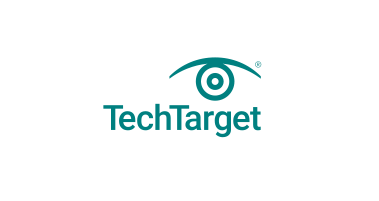Cloud database comparison: AWS, Microsoft, Google and Oracle

The database software landscape no longer consists of a handful of dominant database management system technologies. The available offerings in the database market have expanded significantly and now include dozens of cloud-based products that range from general-purpose ones to different purpose-built DBMS platforms designed to meet a specific set of application requirements.
There are also a wide variety of managed database services provided by DBMS vendors in the cloud, consisting of both database as a service (DBaaS) and data warehouse as a service (DWaaS) offerings. To select the right vendor and technology for their organization, data management teams must conduct a detailed comparison of the available cloud database choices.
Three of the high-level evaluation criteria that IT professionals typically use for a cloud database comparison are the full breadth of product suites, mechanisms for migrating databases to the cloud and pricing. Based on those criteria, here’s an assessment of the cloud DBMS technologies offered by AWS, Microsoft, Google and Oracle — the four top DBaaS and DWaaS vendors, as ranked by consulting firm Gartner in a report published in December 2023.
Breadth of product offerings
There are good reasons to consider this aspect as part of the technology evaluation process. Database administrators (DBAs) need to understand the basics of cloud database software and also learn the intricacies of a vendor’s underlying architecture. Using the same vendor for multiple products lets DBAs extend their existing skills to other DBMS products. In addition, it simplifies communications between different database-driven applications.
AWS, Microsoft, Google and Oracle all offer various types of database systems in the cloud. That includes SQL-based relational databases, the most widely used technology overall, plus NoSQL software and different specialized systems. Let’s look at how they compare on the breadth of their cloud database product lines.
AWS
AWS currently leads the other competitors in product breadth, with a total of 17 database engines available. Amazon Aurora, its general-purpose relational DBMS, is fully compatible with the MySQL and PostgreSQL open source databases. It offers automatic failovers, continuous backups and up to 15 read replicas to boost scalability and data availability. It can also be deployed in a serverless database configuration that automatically scales up or down as needed.
Aurora is part of Amazon Relational Database Service (RDS), a product suite that also includes six external database engines: Microsoft SQL Server; Oracle Database; IBM Db2; MySQL; PostgreSQL; and MariaDB, another open source DBMS. Amazon RDS is also available on AWS Outposts, which enables customers to deploy fully managed SQL Server, MySQL and PostgreSQL databases in on-premises data centers.
The AWS relational database lineup also includes Amazon Redshift, a petabyte-scale data warehouse platform that automates warehouse management tasks and uses built-in machine learning tools to generate predictive insights. Redshift is available in a serverless setup too.
The NoSQL database technologies offered by AWS include Amazon DocumentDB (with MongoDB compatibility). It’s a document database that supports versions 3.6, 4.0 and 5.0 of MongoDB, which previously was an open source technology. MongoDB was converted to a more restrictive source-available license in 2018, and DocumentDB isn’t compatible with the newer 6.0 and 7.0 releases.
Amazon Keyspaces (for Apache Cassandra) is another NoSQL database. It’s a wide-column store that enables customers to migrate Cassandra open source databases and their workloads to the AWS cloud with almost no changes. There’s also Amazon Neptune for graph database applications, the Amazon DynamoDB key-value store and both Amazon ElastiCache and Amazon MemoryDB for in-memory database deployments. MemoryDB is compatible with the Redis open source database, while ElastiCache supports Redis and Memcached, a distributed caching technology.
In addition, AWS has Amazon Timestream, a time series database that’s available with the company’s own LiveAnalytics engine or the InfluxDB open source software. While Amazon OpenSearch Service isn’t listed as a database platform, the search and analytics software suite provides vector database capabilities to support generative AI (GenAI) tools and machine learning applications. AWS also offered Amazon Quantum Ledger Database for creating cryptographically verifiable transaction logs, but it was discontinued in July 2024. The service will stop running for existing customers at the end of July 2025.
Microsoft
Microsoft also continues to expand the database product portfolio and capabilities offered as part of its Azure cloud, with a total of 12 services currently available. Azure SQL Database is the company’s flagship relational DBaaS platform. It’s a cousin to Microsoft’s SQL Server on-premises database software but has some differences on features and functionality. Azure SQL Database is available in three service tiers: general-purpose and business-critical, both supporting up to 4 TB of data, and hyperscale, for databases with storage capacity of up to 100 TB.
Azure SQL Managed Instance is an offshoot of Azure SQL Database that provides almost 100% compatibility with SQL Server, which makes it easier for customers to migrate existing databases to the managed cloud service. Alternatively, organizations that want to migrate their databases to a self-managed IaaS platform can use SQL Server on Azure Virtual Machines.
In addition, Azure SQL Edge is a specialized relational database system for edge computing that supports data streaming and time series data. It also includes machine learning and graph features. Azure Synapse Analytics is another service that can be used for cloud-based data warehousing through a relational engine and also supports big data applications in data lakes as well as analysis of log and time series data.
For customers that want to deploy open source DBMS software in the Azure cloud, Microsoft offers fully managed DBaaS environments for MySQL and PostgreSQL. It also had one for MariaDB, but that version has been dropped from the product line and will be retired in September 2025, when all workloads running on the service and associated application data will be deleted from the Azure cloud.
Microsoft also offers Azure Cosmos DB, a multimodel NoSQL database that includes a MongoDB-compatible service as well as a native NoSQL one with JSON document storage and vector database capabilities. Azure Cosmos DB can also run relational workloads through a PostgreSQL service. Separately, Azure Managed Instance for Apache Cassandra lets customers run Cassandra databases in the Azure cloud, and Azure Cache for Redis can be used to store data in memory. Microsoft’s Azure AI Search service can function as a vector database.
Google’s growing suite of DBMS products — now including 11 database engines — highlights its keen interest in supporting the data management needs of businesses as part of the Google Cloud platform. Its relational database offerings include Cloud SQL, a fully managed service that supports MySQL; PostgreSQL and SQL Server databases; and Spanner, a cloud-native distributed SQL database designed for applications that require high scalability. Spanner provides a PostgreSQL interface, built-in vector search capabilities, and automated database maintenance and data replication features.
Google also offers AlloyDB for PostgreSQL, a DBaaS system that’s fully compatible with the open source software. It’s built to provide high levels of performance and scalability for GenAI and other demanding applications. A downloadable AlloyDB Omni edition can be run in other clouds, in on-premises data centers and edge computing environments, and on laptops for application development uses.
Customers can use Google’s Bare Metal Solution for Oracle service to migrate on-premises Oracle databases to Google Cloud. In addition, BigQuery is a serverless platform that can store large volumes of data in cloud data warehouses or in data lakehouses that combine elements of data lakes and data warehouses. That enables BigQuery to support basic BI and reporting tasks plus machine learning and GenAI applications through its BigLake storage engine.
Google’s NoSQL products include Bigtable, a wide-column store for large-scale and latency-sensitive workloads; document database Firestore; and Firebase Realtime Database, another document store that supports real-time data storage and synchronization to enable multi-device access and collaboration among end users. There’s also Memorystore, a fully managed in-memory database service that’s compatible with Redis and Memcached.
Oracle
In recent years, Oracle has also significantly expanded its cloud database lineup. That now includes 11 primary services on the Oracle Cloud Infrastructure (OCI) platform plus related ones that make the technologies available in other cloud environments and on-premises data centers. Oracle’s lead cloud offering is its Autonomous Database technology, which it says can automatically do much of the database configuration, tuning, patching and update work usually done by DBAs.
Autonomous Database is a cloud database software suite that includes three separate services. Autonomous Transaction Processing supports transactional applications and can also concurrently run analytics and batch workloads, while Autonomous Data Warehouse is optimized for heavier-duty analytics applications in data warehouses, data lakes and data lakehouses. Those two services are available for both serverless and dedicated system infrastructure deployments. There’s also Autonomous JSON Database, a NoSQL document database that supports MongoDB and Simple Oracle Document Access APIs. It’s offered only in a serverless version.
Exadata Database Service is another cloud offering that runs Oracle Database, the company’s flagship relational DBMS, on its Exadata hardware platform for applications requiring high performance and scalability. Customers can also use Oracle Base Database Service, a separate DBaaS offering that supports workgroup, departmental and enterprise databases on conventional servers. Both of those services also support vector search, machine learning, graph and spatial applications.
Oracle’s DBaaS product line also includes the multimodel Oracle NoSQL Database Cloud Service and HeatWave, a service that’s based on a high-performance version of MySQL, which Oracle owns. Designed to handle both analytics and transaction processing applications, Heatwave is available in a standalone Heatwave MySQL implementation and three versions that combine the database with a vector store or object storage for GenAI, machine learning and other advanced analytics uses.
In addition, Oracle offers a PostgreSQL service, a distributed version of Oracle Database for global deployments and an in-memory cache based on Redis as well as an OpenSearch-based search service that can be used as a vector database.
Oracle Database Azure is another service that enables users to run Autonomous Database and Exadata Database Service on OCI in Microsoft Azure data centers. A similar Google Cloud offering is scheduled to be launched in late 2024. The Autonomous Database and Exadata services can also be deployed on premises through Oracle’s Exadata Cloud Customer program.
Database migration and conversion capabilities
The second core evaluation point for a cloud database comparison is the mechanisms that vendors offer to migrate and convert on-premises databases to their platforms. This can be a big differentiator among the top cloud database vendors.
AWS
AWS Database Migration Service is a comprehensive replication utility that can be used to initially seed your DBaaS platform with data and then keep it in sync with your source system. In addition to replicating data between homogenous sources and targets, the service enables DBAs to set up replication between a wide variety of heterogeneous platforms. That lets customers migrate their databases to the AWS cloud and switch to a different DBMS there. The number of source and target systems the service supports as well as its robust feature set continue to surpass other migration offerings.
AWS also provides the standalone AWS Schema Conversion Tool, which helps users convert the source database schema — a blueprint of tables, views, stored procedures, functions and other database objects — to its Amazon counterpart. The tool, which DBAs and database developers can download to local drives, also scans application code for embedded SQL statements and converts them to access the cloud database software.
Microsoft
Although its initial tool sets focused on migrating on-premises SQL Server databases to Azure SQL Database, Microsoft has ramped up its efforts to help customers migrate other databases to its DBaaS products. The company’s Azure Database Migration Service can now also be used to migrate data from SQL Server to Azure SQL Managed Instance and SQL Server on Azure Virtual Machines. In addition, data can be migrated from MongoDB to Azure Cosmos DB as well as from MySQL and PostgreSQL to the respective versions of Azure Database for those two technologies.
Customers can migrate SQL Server, MySQL and PostgreSQL databases running on Amazon RDS to their Azure SQL Database and Azure Database counterparts, too. Across the board, though, there are some differences in what the service supports for one-time offline migrations vs. online ones that continuously synchronize the source and target databases.
Microsoft also offers an Azure SQL migration extension for Azure Data Studio, a data management tool that supports both cloud and on-premises databases. The extension provides a database assessment mechanism, sizing recommendations and data movement orchestration capabilities powered by Azure Database Migration Service to automate SQL Server migrations to the cloud.
Its Database Migration Service (DMS) helps customers migrate on-premises MySQL, PostgreSQL and SQL Server databases to the respective versions of its Cloud SQL software. The service also supports migration of those databases if they’re running in Amazon RDS, and Amazon Aurora databases can be migrated to Cloud SQL for MySQL or PostgreSQL. In addition, DMS can be used to migrate PostgreSQL databases to AlloyDB from Cloud SQL, on-premises systems, and both Amazon RDS and Amazon Aurora. Oracle Database installations can be moved to CloudSQL for PostgreSQL or AlloyDB through DMS too.
For homogeneous migrations, Google uses the database’s inherent replication features to transfer data. For heterogenous database conversions, such as moving from Oracle to PostgreSQL, Google uses a change data capture replication process. The vendor has also incorporated its Gemini large language model into DMS, currently as a technology preview. Initially, Gemini provides GenAI capabilities to assist in converting stored procedures, triggers and other database code to a PostgreSQL-compatible dialect.
Oracle
Oracle supports numerous methods for migrating its own on-premises databases to the OCI cloud. It also offers OCI Database Migration, a service for migrating Oracle Database and MySQL systems, including ones running in Amazon RDS. Supported target databases include Autonomous Database, Exadata Database Service and Oracle Base Database Service.
To help customers migrate non-Oracle databases to OCI, it relies primarily on Oracle SQL Developer, a tool that includes a migration wizard for moving on-premises MySQL, SQL Server, IBM Db2, Sybase Adaptive Server and Teradata Database systems to Autonomous Database. Oracle SQL Developer also provides a migration utility for customers that want to migrate from Amazon Redshift to Autonomous Database.
For no extra cost to cloud users, Oracle also offers Oracle Cloud Lift Services, which gives customers a single point of contact and access to cloud engineering resources and technical tools to help them migrate database and application workloads to OCI.
Cloud database pricing models
The key to preventing sticker shock on cloud costs is to fully understand how a vendor charges for resource allocation and utilization. You don’t purchase your cloud database environment. You essentially rent it and pay usage-based fees, which can vary widely depending on the vendor, database service, system configuration and workloads.
Some of the common factors that affect cloud database pricing include the following:
- The geographic region where the database system runs.
- CPUs or GPUs and the computing power they provide.
- Memory and storage capacity.
- The amount of I/O generated.
- Network bandwidth and disk subsystem performance guarantees.
- Data storage for backups that exceed vendor allocations.
- High availability configurations.
- Data transfers out of the cloud environment.
With that as background information, here’s a look at the pricing models used by the four vendors.
AWS
Compared to competitors, its pay-as-you-go pricing mechanisms are more complex. But this complexity is the result of the wide range of database options and features that AWS provides, which enables customers to tailor an environment that meets their workload requirements.
Depending on the DBMS, AWS charges customers based on region, server vs. serverless configurations, CPU, memory, disk, I/O rates, backup storage and data transfers out of its cloud platform. For example, Amazon RDS customers select from a range of database instance types with different pricing to fit their specific use case. The instance types offer different combinations of CPU, memory, storage and networking bandwidth, and they include general-purpose and memory-optimized options.
Customers can choose on-demand database instances, which are priced by factors such as the hour or second of usage or the number of data reads and writes against the database. Several AWS database services also allow users to reserve instances or processing capacity in advance to get discounted pricing on regular workloads. With Amazon RDS, for example, instances can be reserved for a one-year or three-year period. Paying the full price upfront gets the largest discount. There are also options for partial or no upfront payments.
Microsoft
Microsoft provides two pricing options for Azure SQL Database, its premier cloud DBMS. Customers can use a database transaction unit (DTU) purchasing model, which combines compute, storage and I/O resources into packages for common workloads. Or they can use a virtual core (vCore) CPU-based purchasing model that lets them choose between different generations of hardware and select compute, memory, storage and I/O separately. The vCore option also enables customers to choose between a provisioned or serverless computing tier.
Azure SQL Database customers can also group multiple systems together and allocate resources to them as a single unit. The groups, called elastic pools, let the databases share resources. DBAs can assign databases with workloads that spike at different times to the same pool to reduce overall resource utilization costs. Both the DTU and vCore purchasing models are also available for elastic pools.
For Microsoft’s open source DBMS offerings, customers can choose the number of vCores and different memory allocation combinations as well as general-purpose or memory-optimized instances, storage allocations, and the number of read replicas to get different pricing levels.
When compared to Microsoft and AWS, Google’s pricing models are simpler and easier to understand. Although Google might not offer the multitude of compute, memory and storage configuration options that its competitors do, customers are still able to select a set of resource allocations at different pricing levels to meet their data processing needs.
For example, Cloud SQL users configure their systems by selecting a region and high-availability options as well as allocating virtual CPUs, memory, storage and network resources. In addition to hourly or monthly on-demand pricing, Google offers one-year or three-year usage commitments that provide 25% and 52% discounts on CPU and memory pricing. The discounts don’t apply to storage, backups or outbound data transfer pricing, which differs based on the destination of data.
For the Spanner distributed SQL database, Google charges customers based on the amount of computing capacity, database and backup storage capacity and network bandwidth used.
Oracle
For its Autonomous Database services, Oracle charges hourly pricing based on the number of Elastic CPUs used by a system. ECPUs represent the number of processor cores elastically allocated on a per-hour basis from Oracle’s compute and storage servers. Customers also pay a monthly per-GB storage capacity charge on serverless deployments or an hourly hosted environment fee for the Exadata-based dedicated infrastructure.
Like Microsoft, Oracle supports elastic pools for sharing resources between multiple database instances in Autonomous Database systems. Existing Oracle users can also choose a bring-your-own-license option that lets them apply their on-premises database licenses to the cloud services for lower pricing.
Exadata Database Service similarly combines ECPU and storage capacity pricing for deployments that access a shared pool of compute and storage resources. For dedicated infrastructure, it has hourly pricing based on the number of allocated Oracle CPUs (OCPUs), an older processor metric that represents the physical CPU cores in a system. One OCPU is equivalent to two x86 virtual CPUs, according to Oracle. As with Autonomous Database, the hosted environment fee also applies.
All of Oracle’s database products can be priced using its online cost estimator. When you do so, it’s obvious that the vendor spent a lot of time on ease of use in creating the utility. With Autonomous Database, for example, you pick the license, deployment and workload types and the billing model (i.e., a single database or an elastic pool). Then you select a peak ECPU number, the percentage of time it will be needed and a data storage allocation to get an estimated monthly cost.
Limitations and drawbacks
Many of the potential disadvantages of cloud databases are common to all systems running in the cloud. For example, getting a lot of data into and out of a cloud platform can be challenging. In addition, many organizations find that the cloud requires an all-in approach. To avoid performance issues, both an application and the database it accesses need to run on the same cloud platform. Transferring data between on-premises and cloud systems adds processing time and creates latency.
Here are some specific issues to be aware of in comparing the top cloud database vendors.
AWS
With its broad and deep suite of cloud DBMS services, AWS environments can be complex to administer, and correctly provisioning new systems is often a challenge. Some reviewers also say that AWS can sometimes now be undercut on pricing by competitors, including Google, Microsoft and Oracle. In addition, AWS provides limited on-premises offerings through AWS Outposts, which might be an issue for customers that have large in-house data center investments.
Microsoft
Although Microsoft provides a wide range of cloud database offerings, it continues to lag AWS in overall cloud services. Azure users that need to build multi-tier and multi-service applications might find themselves writing custom code or purchasing a third-party service to provide capabilities that AWS offers to its customers. Reviewers also state that Microsoft’s costs are often higher than similar systems priced on competing platforms.
Like the AWS cloud, Microsoft’s environment is highly complex and provisioning can be challenging. Customers that want to use Microsoft’s DTU pricing model often find that measuring their existing system’s resource utilization to perform the DTU calculations is especially difficult. Microsoft users also need to be aware of potential feature mismatch issues between on-premises SQL Server and Azure SQL Database, which could require some reengineering to fix incompatibilities when migrating databases.
Compared to AWS in particular, Google’s portfolio of cloud database services remains less comprehensive and diverse than the competition. Google has closed the gap, but users should be prepared for some growing pains as the Google Cloud unit tries to further expand its enterprise footprint.
Oracle
Oracle is known to be pricier than its competitors. Oracle licensing and contract negotiations have always been complex and overly stressful for customers. This issue continues with its cloud offerings despite its user-friendly cost estimator. Oracle also has the lowest market share for cloud systems when compared to AWS, Microsoft and Google. In addition, its heterogenous DBMS options remain somewhat lacking relative to the others. However, Oracle is taking more of a multi-cloud approach with its own database services.
Editor’s note: This article was originally published in 2022. TechTarget industry editor Craig Stedman updated it in 2024 for timeliness and to add new information.
Chris Foot retired in 2023 after working as an IT professional, consultant and strategist in fields such as database administration, systems architecture and data infrastructure service delivery.




